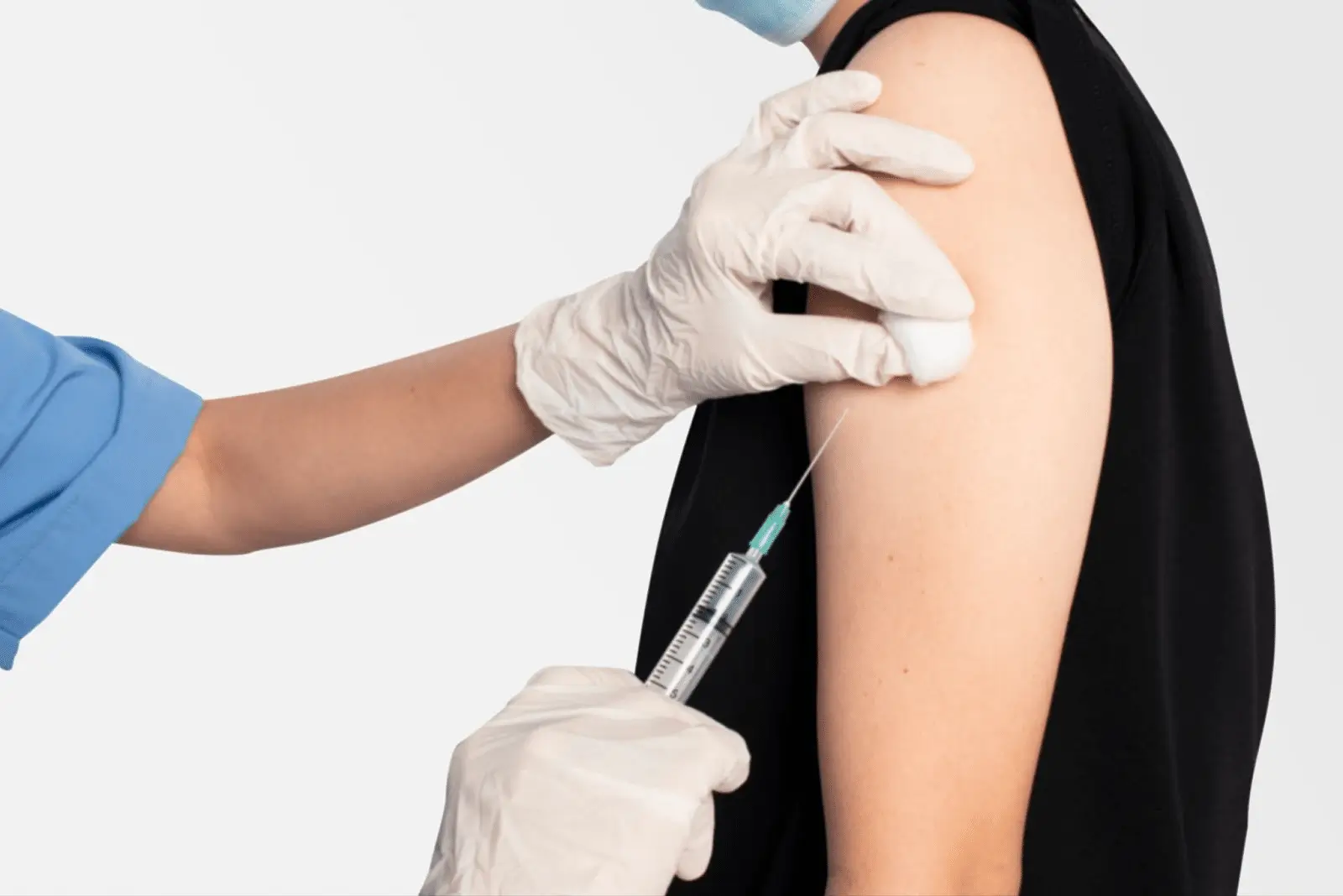Only for Licensed Professionals
Only for Licensed Professionals
.webp)
Xolair Prescribing Information for Practitioners
David Fuller
Last Updated On: October 6, 2025
As more patients turn to advanced biologic therapies, omalizumab (Xolair) has become a key option for conditions where traditional treatments fall short. For allergy and immunology specialists, staying up to date on its prescribing details is critical to ensure both safety and therapeutic success.
Xolair is a monoclonal antibody approved for moderate to severe allergic asthma, chronic spontaneous urticaria, chronic rhinosinusitis with nasal polyps, and IgE-mediated food allergy. Because each indication has unique eligibility requirements, dosing considerations, and safety precautions, a clear understanding of the prescribing information is essential for providing appropriate patient care.
This article provides a practical, clinician-focused guide to Xolair prescribing, helping providers navigate eligibility criteria, dosing schedules, monitoring requirements, and important safety measures for real-world practice.
Key Takeaways
- Xolair (omalizumab) is an anti-IgE biologic approved for allergic asthma (≥6 years), chronic spontaneous urticaria (≥12 years), chronic rhinosinusitis with nasal polyps (≥18 years), and IgE-mediated food allergy (≥1 year).
- Dosing is weight- and IgE-based for asthma, nasal polyps, and food allergy, while CSU uses fixed doses of 150 mg or 300 mg every 4 weeks.
- Therapy must be initiated in a healthcare setting due to the risk of anaphylaxis; some patients may later transition to self-injection after training.
- Common side effects include injection site reactions, headache, fatigue, and joint pain, while rare risks include anaphylaxis and malignancy signals.
- Proper storage (2–8°C, not frozen, protected from light) and careful eligibility screening are key for maintaining safety and effectiveness.
About: Operating since 2016, Med Supply Solutions is known for being one of the industry’s top and trusted suppliers of cosmetic and viscosupplementation products. If you’re interested in purchasing Xolair online, please contact our sales department for more information.

Mechanism of Action and Clinical Role of Xolair (Omalizumab)

The mechanism of action of Xolair centers on its ability to bind free immunoglobulin E (IgE). By blocking IgE from attaching to its high-affinity receptors (FcεRI) on mast cells and basophils, omalizumab reduces the release of histamine and other mediators that drive allergic inflammation. In asthma, this leads to fewer exacerbations, while in chronic spontaneous urticaria (CSU), omalizumab lowers free IgE and downregulates FcεRI—though the exact way it improves symptoms in CSU is not yet fully defined.
Unlike inhaled corticosteroids, which broadly suppress inflammation, omalizumab targets a specific step in the allergic cascade. This precision makes it an important option for patients whose conditions remain uncontrolled despite standard therapies.
Clinically, Xolair is now an established treatment across multiple allergic conditions. Its approved use spans allergic asthma, chronic spontaneous urticaria, chronic rhinosinusitis with nasal polyps (CRSwNP), and IgE-mediated food allergy. Together, these Xolair indications highlight how biologics are reshaping allergy and immunology practice by offering targeted, long-term control for patients with difficult-to-manage disease.
Approved Indications and Eligibility Criteria for Xolair Use

According to the official prescribing label, Xolair is reserved for patients whose allergic conditions remain uncontrolled despite conventional therapy. Careful evaluation of each patient ensures that the treatment is both safe and effective.
Key Indications and Eligibility Criteria
- Moderate-to-Severe Allergic Asthma: For patients ≥6 years with confirmed allergic asthma that is uncontrolled by inhaled corticosteroids. Eligibility requires elevated baseline IgE, a positive allergy test for perennial aeroallergens, and persistent symptoms. Dosing depends on both body weight and pretreatment total IgE.
- Chronic Spontaneous Urticaria (CSU): For patients ≥12 years with ongoing hives and itching despite high-dose antihistamines. Here, dosing is fixed (150 or 300 mg every 4 weeks) and not based on IgE or weight.
- Chronic Rhinosinusitis with Nasal Polyps (CRSwNP): Approved in adults ≥18 years who remain symptomatic despite intranasal corticosteroids. Dosing is weight- and IgE-based (75–600 mg every 2–4 weeks) and helps shrink polyps, relieve congestion, and improve breathing.
- IgE-Mediated Food Allergy: Approved in patients ≥1 year to reduce reactions from accidental food exposures. Used together with strict allergen avoidance, dosing ranges from 75–600 mg every 2–4 weeks based on IgE and weight.
Before prescribing, clinicians should conduct allergy testing, review prior treatments, and rule out contraindications. Using Xolair outside of labeled indications may limit effectiveness or increase risks.
Dosing, Administration, and Storage Guidelines for Xolair
Xolair dosing depends on the condition being treated, as well as the patient’s baseline IgE and body weight for certain indications.
- Asthma: 75–375 mg subcutaneously every 2 or 4 weeks, based on weight and pretreatment IgE.
- CSU: Fixed dose of 150 mg or 300 mg every 4 weeks, regardless of IgE or weight.
- CRSwNP: 75–600 mg every 2–4 weeks, determined by IgE and weight.
- Food Allergy: 75–600 mg every 2–4 weeks, determined by IgE and weight, always alongside strict allergen avoidance.
Administration
Xolair is given as a subcutaneous injection in the upper arm, thigh, or abdomen. The initial treatment usually takes place in a clinic due to the risk of anaphylaxis, with observation afterward. For selected patients, they may perform self-administration of prefilled syringes or use autoinjectors once a professional deems it safe.
Storage
Keep refrigerated at 2–8°C (36–46°F), protected from light, and never frozen. Allow the medication to reach room temperature for 15–30 minutes before injection.
Safety Information, Monitoring, and Patient Counseling with Xolair
Xolair carries a boxed warning for anaphylaxis. Reactions may occur within minutes, hours, or days after injection. For this reason, initial doses should be given in healthcare settings equipped with emergency resources. Practitioners should provide guidance for patients on early warning signs, including wheezing, dizziness, throat swelling, or sudden rash.
Other side effects include injection-site reactions, headache, arthralgia, fatigue, and rare systemic immune responses like serum sickness. Post-marketing reports have also noted thrombocytopenia and a possible malignancy signal, though causality has not been confirmed. Clinicians should weigh risks against benefits and reassess the ongoing need for therapy regularly.
Effective patient counseling improves both safety and adherence. Providers should explain expected benefits, potential risks, the importance of follow-up, and when to seek urgent care. Reassurance about safety monitoring helps patients feel more confident in long-term treatment.
Conclusion
For healthcare professionals, the Xolair prescribing information serves as a critical guide to safe and effective treatment. By understanding its mechanism of action, following eligibility criteria for approved Xolair indications, and applying weight- and IgE-based dosing where appropriate, clinicians can optimize outcomes for patients with severe allergic disease.
Equally important are the safeguards: initiating therapy in a monitored setting, educating patients on potential risks, and scheduling regular follow-ups. With this structured approach, Xolair offers reliable relief for conditions like asthma, urticaria, nasal polyps, and food allergy, while maintaining a favorable safety profile.
FAQs
1. What is Xolair’s generic name?
Xolair’s generic name is omalizumab, a monoclonal antibody that binds IgE and helps reduce allergic responses.
2. How is Xolair given?
Healthcare professionals administer Xolair as a subcutaneous injection every 2–4 weeks. For asthma, CRSwNP, and food allergy, dosing is based on baseline IgE and body weight. For CSU, it follows a fixed dosing at 150 mg or 300 mg every 4 weeks.
3. What are the storage requirements for Xolair?
Refrigerate Xolair at 2–8°C (36–46°F), keep it away from light, and never freeze it. Let it reach room temperature before injection.
4. Why does Xolair carry a boxed warning?
Xolair carries a boxed warning for anaphylaxis, a rare but serious allergic reaction. Initiate therapy in a medical setting with emergency support available.
References
Papaioannou AI, Mplizou M, Porpodis K, et al. Long-term efficacy and safety of omalizumab in patients with allergic asthma: A real-life study. Allergy Asthma Proc. 2021;42(3):235-242. doi:10.2500/aap.2021.42.210014
Menzella F, Fontana M, Contoli M, et al. Efficacy and Safety of Omalizumab Treatment Over a 16-Year Follow-Up: When a Clinical Trial Meets Real-Life. J Asthma Allergy. 2022;15:505-515. Published 2022 Apr 21. doi:10.2147/JAA.S363398
XOLAIR® (omalizumab) injection, for subcutaneous use. Package insert. Genentech, Inc; 2021. https://www.accessdata.fda.gov/drugsatfda_docs/label/2021/103976s5238lbl.pdf
Products
Cart
Log In
Newsletter
Subscribe for exclusive offers and updates on new arrivals
Share feedback at:
Working Hours
MON - SUN 9AM to 6PM EST
The Most Popular Brands
Med Supply Solutions
Support
Secure checkout is guaranteed with full adherence to PCI DSS payment standards.
Products listed here are guaranteed authentic and manufacturer-sourced.
Pay easily with trusted providers


*Google and Apple Pay are currently only available via a direct link provided by your account manager.
Copyright 2025. Med Supply Solutions